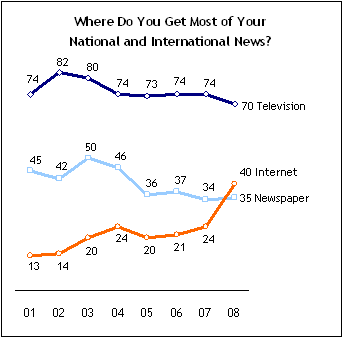 My proclamation the other day that “print is still king” got considerable flak from folks who disagreed with assumptions I made in the analysis, as well as from those who apparently didn’t read the qualifier in the headline: “Only 3 percent of newspaper reading happens online.” That’s newspaper reading, not news reading.
My proclamation the other day that “print is still king” got considerable flak from folks who disagreed with assumptions I made in the analysis, as well as from those who apparently didn’t read the qualifier in the headline: “Only 3 percent of newspaper reading happens online.” That’s newspaper reading, not news reading.
In other words, that analysis, limited to the world of newspaper content in print and online, shows that as newspaper readers migrate from print to online sourcing of news, most of them are moving beyond the limited realm of newspaper web sites. This was duly pointed out by some of the commenters, and as a next step in considering the problems that newspapers face, it’s worth exploring what the scope of that problem is and what the newspaper industry must do about it.
First, the scope of the problem: To what extent have Americans shifted their news consumption to the Web, and what share of that attention is on newspaper web sites? Let me avoid the risk of stepping into another controversy over statistics and point to a couple of data sources. Here’s the data. Visit the links. I’ll draw my conclusions, and you can draw yours:
Print newspaper readership continues to decline, as indicated by the downward spiral in paid circulation. Year-over-year ABC-audited newspaper circulation fell 4.6 percent weekdays, 4.8 percent Sundays for the six-month audit period ending last September 30. The next batch of ABC data is due shortly for the period ending March 31, and will likely show a continuation of a 30-year downward trend. USA Today alone is expected to show a drop of 100,000 copies or more than 4 percent.
More and more Americans get their news online. In December the Pew Research Center for People and the Press reported that for the first time, more people got “most of their news about national and international issues from the internet” than from printed newspapers, by a ratio of 40 percent to 35 percent. Here’s the graph from that report:

That doesn’t say anything about local news, but it certainly indicates in what direction things are moving. Around the same time, Gallup reached similar results showing the same migration away from local newspapers:

and toward news on the net:

Newspaper sites are far from dominant deliverers of online news. The 40 percent (or more, by now) of people who get most of their news online direct only a fraction of their attention to newspaper sites. In the Pew Center for Excellence in Journalism’s recently issued annual report called “The State of the News Media,” the top 10 news sites ranked by unique visitors include just three news organizations (New York Times, Gannett and Tribune), two of which are there only by using are multi-site corporate counts.  For 2008, those three newspaper organizations could claim only 22 percent of the total unique visitors among the top 10. Just how small a fraction of the news audience attention newspaper sites hold is debatable (and was debated at length in my prior post’s comments), but it’s probably much less than half, and probably in the ballpark of one-fourth.*
In other words, the basic problem that newspaper companies face is that they are losing their print audience slowly but surely to news sources on the Web, and they are not gaining a share of the online audience that’s commensurate with their historical share of analog media.
Secondly, what can the newspaper industry do about this problem?
There are solutions, and the time to act is now. But to begin with (and the thinking of Stephen Brill notwithstanding) newspapers are in no position to charge for content, with the possible exception of high-value niche content in limited circumstances. The last thing an industry hard hit by disruption should be doing is raising prices, whether from zero to something, or from something to something more. What they should be doing is this:
Newspapers must become digital enterprises, even if they choose to continue to print on some days or on every day of the week. The corporate culture of newspapers is still very much that of an “industry” with its bricks and mortar, iron and steel, trucks, vans and smokestacks. The daily work flow of most newspaper employees is organized around the central event of the daily press deadline. That culture is hard to change, even in the few newspaper firms where top leadership understands the need for reinvention as a digital enterprise. And it’s hard to do this, because there’s no blueprint and the few industry pioneers who are leading the way don’t necessarily know exactly what they’re doing. It’s very much a “fire, ready, aim” process. But here are a few components I believe are essential if any newspapers are to survive:
Photo by swingnut, used under Creative Commons license.
_________
*The statistically inclined can find top-50 numbers to tinker with, including time-spent data, here. While newspapers have a somewhat higher share of top-50 uniques, the average time spent on site for newspapers is lower than that for non-newspaper news sites.